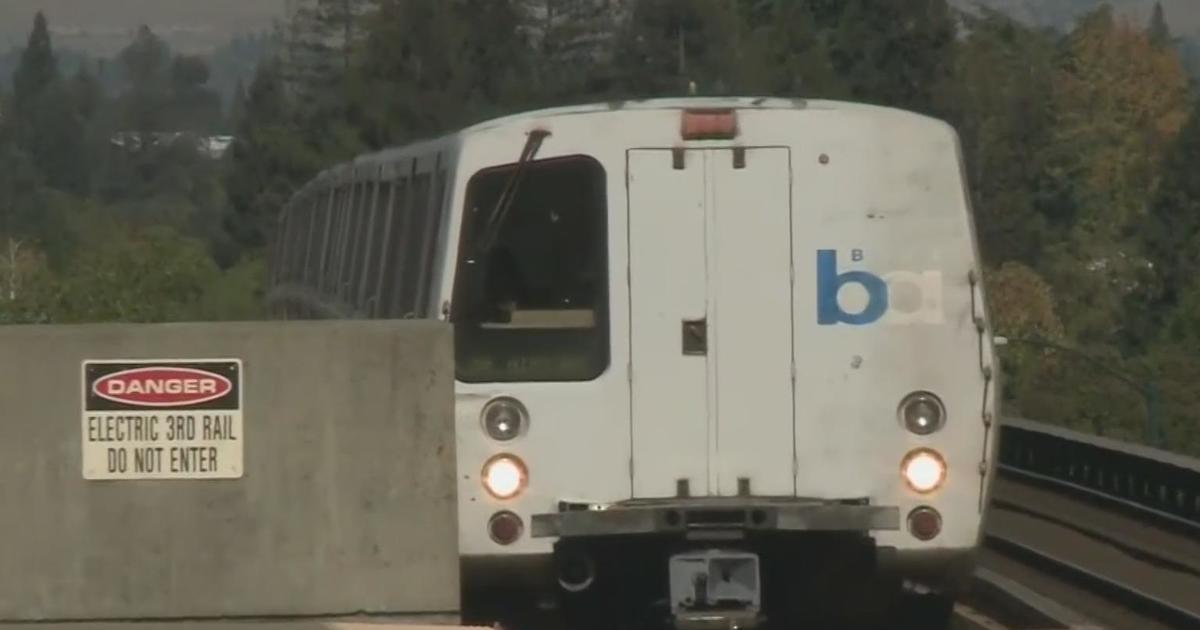Alumni At Oakland's Fremont High Help Fill In The Gaps
OAKLAND (CBS SF) -- The books and papers sit in stacks on the floor in the library at Fremont High in East Oakland while many of the shelves are empty. It's been shut down for more than six years.
"They still have books and the tables and the chairs but they don't let us in," explains student Marlon Orantes. "They don't let us use it because there's no librarian to take care of it."
The closed sign on the library is just one of the reminders of what used to be and what could be for students at Fremont.
William Varner, a Student Rising Above alum gave us a tour, starting with the college center, which is only three years old. "It used to be the music room which we don't have anymore," he explained. It opened when he was a sophomore and didn't exist at all when alum and college adviser Jaliza Collins went to school here. She now runs the center with a palpable determination.
"Why did it take so long to get a college center here?" I asked her. "Because the school did not have the money, that was the main reason why," she answered. "(It) would have benefited a lot, my college choices would have been different, the way I did my applications would have been different."
But it is the underlying message that you hear repeated by students or alums who are all too aware of the resources they lack: "It tells me that we don't matter," says Jaliza Collins. "That's what it feels like, that you know, if you make it you make it, if you don't, we didn't expect you to anyway. Even now, there is only one official college counselor at the school."
Jaliza Collins is just one of a group of about ten Fremont alums who have come back to work and improve the school. "We are fighters and we're going to make it no matter what. Regardless of whether we have resources or not, our kids are going to get through." This spirit is surfacing loudly at community meetings to discuss the future of Fremont.
It is one of the five schools the district plans on improving with its "Intensive Support School Initiative", which is in the talking and meeting stages now, as the district accepts proposals.
The challenges are deep: declining enrollment, a student body that comes from impoverished and dangerous neighborhoods -- 80 percent of those students on the free lunch program. The graduation rate 2012-2013 was 56.9 percent. In 2014, a district analysis stated that 17 percent of the students were chronically absent, 33 percent are English learners.
A group of student leaders told us the academic shortcomings limit their learning. "We don't have supplies for labs," said Carmen Jimenez. "For chemistry we mostly do math," added another. "We lack on classes because we don't have French," explained Zaria Woods. "We only have Spanish." Even paper and markers are often in short supply.
History teacher and alum, Michele Gonzales buys a lot of her own materials. "The sharpeners, the pens, I bought those hole punchers. Pretty much everything here," she explained, pointing out the materials near her desk. "The things on the wall I bought and made and printed out on my own printer."
The uneven playing field is literally visible on the football field, which is too short for regulation games.
There is no baseball field, tennis courts or track. The kids going out for track have to run laps on the street. The kids show us the spot across the street from the school where one track student while out running.
"How can they really feel enthusiastic about really trying to do a sport and its like really nothing much to work with, so now, I feel bad that we really don't have much," says William Varner.
Inside the weight room, coach and Fremont alum, Scot Alexander shows us the benches where the padding has completely worn off in spots. "I graduated here in '86, so I was here in 1984," he explains showing us one particularly shabby bench. "This is the same exact bench that I laid on in '84 to lift weights." He shows us a closet full of equipment that is now broken; a hole on the wall where there used to be a clock.
"These teachers do the best they can with the resources they have," the coach says. They have to use their imagination he says.
It costs more money to run a school where the kids have greater needs and often lack support at home. There are no wealthy parents or a PTA with enough money to make up for shortages. Oakland schools has designated Fremont along with Castlemont and McClymonds High as priority sites based on test scores, chronic absences, assessment data, and newcomer costs. Those schools receive approximately $1900 more per student than other schools in Oakland. But it is extremely difficult to make up for the disadvantages these students often face at home.
The student leaders tell us they don't know many kids who have computers at home. "And if they do," says Marquis Whilhite, "they probably don't have Internet." Smithcell Galvan explains, "that's why some kids they barely do their homework. They don't have any access to technology or stuff."
Zaria Woods says, "a lot of people who are hard on us like, why don't you guys do that? It's because that's all we have. People don't understand our daily struggle, which is like, we come not from nothing, but we barely have anything."
"I really believe Fremont is a good school and has potential to be even better school," says William Varner. "If we just had money coming in we could actually get stuff done."



